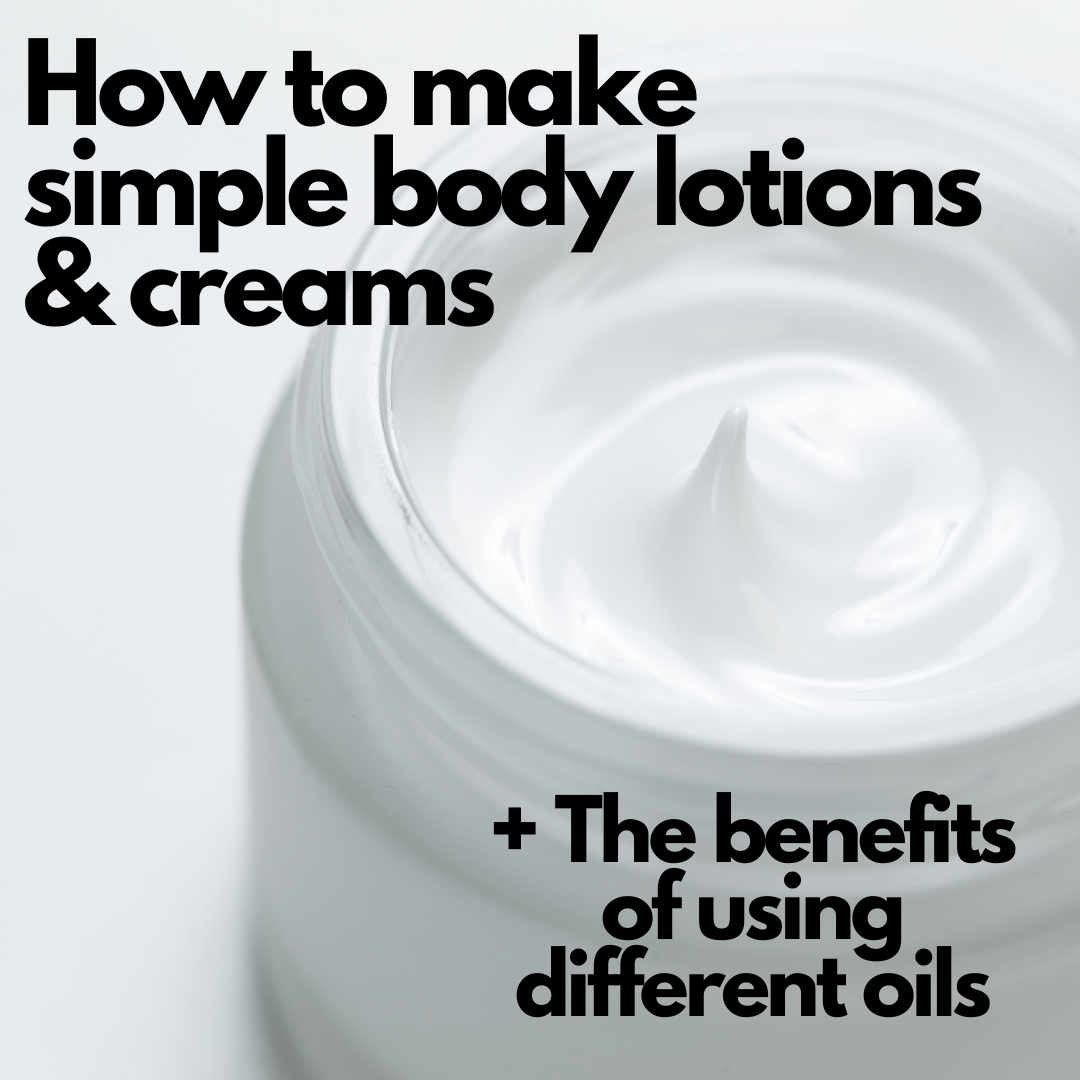Making simple body lotions and creams from scratch.
In this post, we'll look at how simple it is to create homemade body lotions and creams using emulsifying wax, oil, and water.
Creating your own body lotion can be fun and simple if you have the right ingredients and a little bit of know-how. By using homemade body lotions and creams to moisturise and nurture your skin, we can avoid the harsh chemicals and additives present in many commercial products.
Let's start by discussing the components you will need to produce a simple body lotion or cream. Oil, water, emulsifying wax, and a preservative are all required. Emulsifying wax is essential because it facilitates the blending of oil and water. You can find emulsifying wax here.
How it's done.
If you've ever made your own Caesar salad dressing or mayonaisse, this is exactly the same process. But instead of egg we use emulsifying wax and instead of vegetable oil we use one that benefits our skin.
Follow along as we combine 3 simple ingredients, water, oil, and emulsifying wax, to create our own lotion in minutes.
- The first step is to measure out your ingredients. You will need about 75% water and 25% oil. For example, if you want to make 100ml of lotion, you will need 75ml of water and 25ml of oil. You can use any type of oil you like, such as coconut oil, almond oil, or jojoba oil.
- Next, you will need to melt the emulsifying wax and oil together in a double boiler or a heat-safe bowl over a pot of simmering water. Stir the mixture until the wax has completely melted and the oil is well incorporated.
- Once the wax and oil have melted together, slowly add the water to the mixture while stirring or whipping constantly. This is where the emulsifying wax comes in - it helps to combine the oil and water together so that they do not separate. Continue stirring the mixture until it is well combined and has a smooth, creamy texture.
- At this point, you can add essential oils for fragrance. You can also add any additional ingredients you like, such as preservatives. Preservatives are important to prevent bacteria and mold growth in your lotion. Without the addition of preservatives, it's best to store your lotion in the fridge and to use within one week of making it.
- Finally, transfer your lotion to a sterilized container with a tight-fitting lid. Your homemade body lotion is now ready to use! Keep it stored in a cool, dry place and use within a few months.
Creating your own body lotion is usually not too difficult. Once you've mastered the fundamentals, you can experiment with other oils, essential oils, and additives to produce a lotion tailored specifically to your skin's need.
Making your own body lotion is not only simple, enjoyable, and fulfilling, but it also gives you control over the ingredients you apply to your skin, ensuring that you use the best and most natural ones.
Choose an oil that best suits your skin.
There are numerous different oils available, and each has special advantages for the skin. Let's look at some advantages of various oils in your homemade cream emulsions and body lotions.
-
Coconut oil: Coconut oil is rich in medium-chain fatty acids, which are easily absorbed into the skin, providing long-lasting hydration. Coconut oil is also rich in antioxidants, and has antimicrobial properties, making it effective against acne and other skin infections.
-
Jojoba oil: Jojoba oil is a liquid wax that is similar in composition to the natural oils produced by the skin. This makes it an excellent choice for those with oily or acne-prone skin. Jojoba oil is also high in vitamin E, which is a powerful antioxidant that helps to protect the skin from damage.
-
Almond oil: Almond oil is rich in fatty acids, which help to nourish and moisturize the skin. It is also high in vitamin E, which helps to protect the skin from damage caused by UV radiation. Almond oil is easily absorbed into the skin, making it an excellent choice for those with dry or sensitive skin.
-
Olive oil: Olive oil is rich in antioxidants, and is also high in fatty acids, which help to nourish and moisturize the skin. Olive oil is an excellent choice for those with dry or aging skin.
-
Avocado oil: Avocado oil is rich in vitamins A, D, and E, which help to nourish and hydrate the skin. It is also high in monounsaturated fatty acids, which help to protect the skin from damage. Avocado oil is an excellent choice for those with dry or mature skin.
-
Rosehip oil: Rosehip oil is rich in vitamins A and C, which help to stimulate collagen production and improve skin elasticity. It is also high in fatty acids, which help to moisturize the skin. Rosehip oil is an excellent choice for those with mature or sun-damaged skin.
-
Shea butter: Shea butter is a rich, creamy butter that is high in fatty acids, vitamins, and minerals. It is deeply moisturizing and helps to protect the skin from damage caused by environmental stressors. Shea butter is an excellent choice for those with dry or sensitive skin.
Making homemade body lotions and cream emulsions can be done using a wide variety of oils, not only the ones we've listed. It is crucial to select an oil that is appropriate for your skin type and issues because each oil has distinct skin advantages.
By using natural oils in your skincare routine, you can nourish and hydrate your skin while avoiding the harsh chemicals found in many commercial products.


